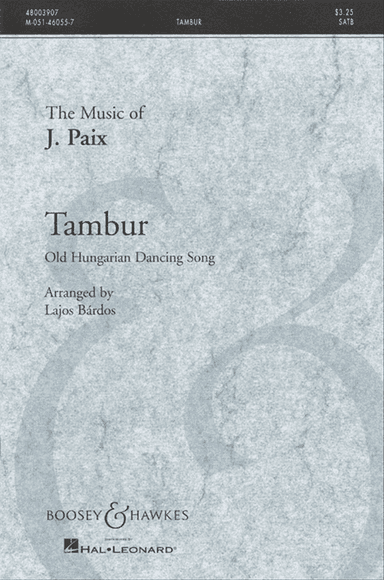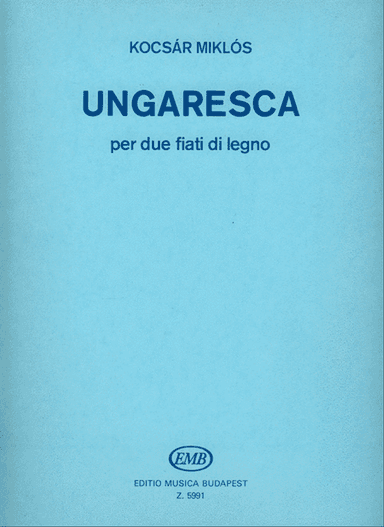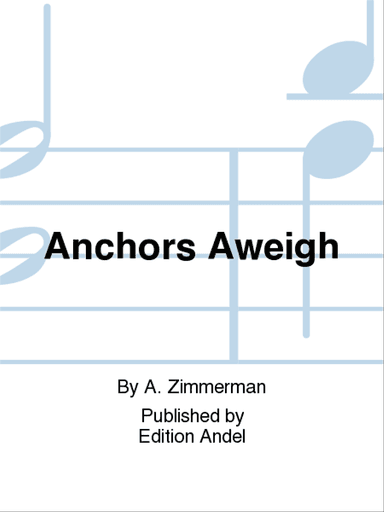Unavailable
Ungaresca is currently unavailable
We can no longer provide this arrangement through Sheet Music Stores. The listing stays online so you can learn about the piece and explore alternatives.
Try these next steps
- Discover similar sheet music curated for you below.
- Search for “Ungaresca” across our catalog.
About this arrangement
Concert Band - Grade 5 SKU: BT.EMBZ14913 Composed by Istvan Gyorffy. EMB Concert Band Series. Concert Piece. Score Only. Composed 2014. 60 pages. Editio Musica Budapest #EMBZ14913. Published by Editio Musica Budapest (BT.EMBZ14913). Hungarian-style dance music which flourished in the 16th and 17th centuries - generally referred to as ungaresca - represents a valuable part of European musical tradition. István Gy rffy's work (2007-2010) is a late successor of this tradition. It was written with the intention of embodying the eastern-central European tradition in order to present an alternative to the current fashions of music for wind instruments. The composer's approach to this style utilizes traditional forms of music. Both the first and third movements effectively optimize a concert band's tonal possibilities by using solos and small chamber groups in a varied manner. The slow and melodic second movementtransfers a characteristic playing technique of Hungarian instrumental folk music to the concert band. István Gy rffy composed Ungaresca for young people preparing for careers in music. The work provides an excellent opportunity for students not only to display their instrumental skills, but also to gain orchestral playing experience. Hungarian or Hungarian-style dance music which flourished in the 16th and 17th centuries - generally referred to as ungaresca - represents a valuable part of European musical tradition. István Gyrffy’s work with its characteristically Hungariantone, composed between 2007 and 2010, is a late successor of this tradition. It was written with the deliberate intention of presenting an alternative - with an east-central European flavour - to the current fashions of music for wind instruments.The composer’s approach to this style is via traditional forms of music. Both the first and the third movements effectively make the best of a concert band’s versatile tonal possibilities by using solos and small chamber music groups in a variedmanner. The slow and melodic second movement transplants a characteristic way of playing instrumental folk music to the concert band. István Gyrffy composed Ungaresca for young people preparing for a career in music. The work provides an excellentopportunity for students not only to display their instrumental skills, but also to gain experience in playing together in an orchestra.Einen wertvollen Bestandteil der europäischen Musiktradition stellt die im 16.-17. Jahrhundert aufblühende ungarische oder von ungarischer Färbung geprägte Tanzmusik, die man üblicherweise unter dem Sammelbegriff Ungaresca kennt, dar. István Gy rffys zwischen 2007 und 2010 komponiertes, typisch ungarisch intoniertes Werk stellt sozusagen eine späte Fortsetzung dieser Tradition dar und entstand mit der unverkennbaren Absicht den gegenwärtigen Moden der Blasmusik eine einheimische, osteuropäisch anmutende Alternative gegenüberzustellen. Diese Tongebung bringt der Komponist über traditionelle musikalische Formen zum Ausdruck. Sowohl der in Sonatenform verfasste I. Satz als auchder III. Satz in Form eines Sonatenrondos schöpfen eindrucksvoll die vielfältigen Klangfarbenmöglichkeiten eines Blasorchesters durch den mannigfaltigen Einsatz der Soli und der kleinen Kammermusikgruppen, die auch die Oberflächen der Form exponieren, aus.
Related sheet music

Saltus Hungaricus

La Bouteille

Tambur
lajos bardos

The Recorder Book
various, steve rosenberg

Ungaresca für 2 Holzbläser
miklos kocsar

Ungaresca and Almande Poussinghe (Pierre Phalèse Jnr, 1583) for Wind Instruments (arr. Colin Kirkpatrick)
unknown, colin kirkpatrick

Ungaresca & Almande Poussinghe (Recueil de Danseries, 1583) (arr. Colin Kirkpatrick)
pierre phalèse jnr

Anchors Aweigh



